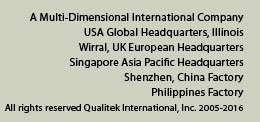Qualiteks Dross Reducing Agent Super Deox helps reduce cost of solder materials.
Super Deox helps reduce solder costs by reducing dross and recovering up to 80% of solder. Click the above button to learn more about Super Deox and start saving. Super Deox cleans dross impurities without reliability issues. Test results prove wave pots treated with Super Deox left all coupons tested to meet the requirements of IPC-TM-650 number 2.6.3.3 section 5.5.1
Lead Free Products
Qualitek has a wide variety of lead-free soldering materials for your immediate use. We will help you implement lead-free solutions to your current process. Qualitek is to offer the most widely used replacement alloy in manufacturing. We have been granted a sublicense to manufacture the (ISURF) patented alloy of Sn95.5/Ag3.8/Cu0.7. We have many other lead-free alternative alloys such as: LF88 Qualitek's own patented alloy.
SPECIFIC PROPERTIES OF FINE PITCH POWDER
Solder powders are the key component of all solder pastes. Pastes made with the same flux but with powders with different particle sizes often have different rheological/physical properties resulting in differences in screen/stencil printing, component placement and production yields. The powder constituent of solder paste, in fact, affects all stages of surface mount assembly from stability and printability of the paste, to the quality of the final fillet. For those reasons it is worth looking into the details of powder characterization, particularly the effects of particle size within the paste on properties such as viscosity, tack and slump. With the increase in the use of ultra fine pitch devices (<20 mil) on the circuit boards the investigation of powder characteristics of ultra fine pitch powder (38-20 microns) vs. fine pitch powder (45-25 microns) and its effect on solder paste are investigated.
Measurements of Malcom viscosity for solder pastes indicate that rheological properties are formula and particle size and distribution dependent. The data seems to indicate, in fact, the Type 4 powder tends to be lower in viscosity vs. the type 3 powder. These results suggest that viscosity is mainly affected by the distribution of particles. Contrary to the belief that the presence of fine particles increase viscosity due to the higher resistance to Newtonian flow.
The comparison of solder powder particle distribution on tack indicates that a high number of fine particles in powder contribute to an increased tack force. In the case of powders with a similar number of fines, paste tack shows more dependence on flux composition. This can be explained due to greater surface area of the finer particles. With a larger surface area the flux encapsulates the area and provides a greater wetted surface. The flux between particles also increases with finer particles.
Hot slump is a property of pastes adversely affected by the increase in the content of fine particles. In general, slump resistance is attributed to the intrinsic ability of the flux/vehicle system to hold the particles with high cohesive forces. In pastes with large numbers of fine particles, the combination of gravity and thermal energy makes it more difficult to retain cohesive forces and the printed shape. Cold slump exhibited by type 3 powder was formulation dependent. |









